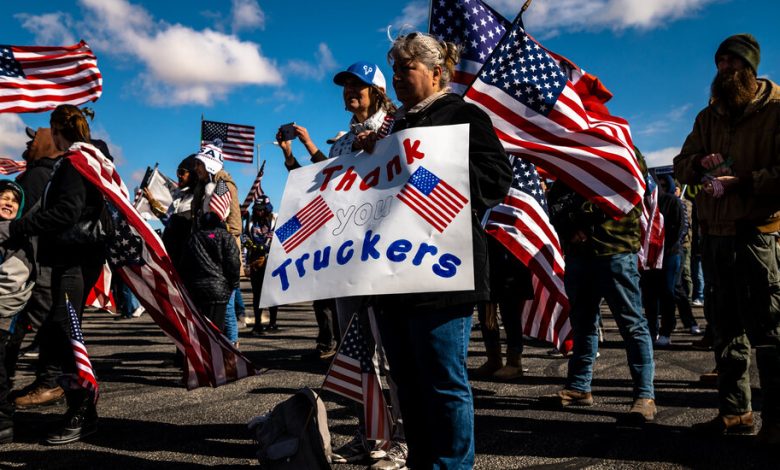Answering Reader Questions on a Covid Effect, Gerrymandering and More


Supporters of a trucking convoy that included vaccine opponents last year in Adelanto, Calif.Credit…Meridith Kohut for The New York Times
A lot of mail has piled up since the election, so let’s take a trip to the mailbag while we’re in a relatively quiet period.
Covid mortality and voting
I’m not sure if I should be surprised by this, but one of the most popular email topics has been a morbid one: the effect of the coronavirus death toll.
John, I doubt pollsters are revising their weighting targets to directly account for Covid deaths. And if some went through the motions of doing so, my guess is they found it wasn’t worth the time.
I don’t want to appear to minimize the significance of more than half a million deaths since the 2020 election (and more than a million since the start of the pandemic), but the truth is this is not a large enough number to significantly affect the American electorate.
Let’s suppose the most extreme case: Imagine that every single post-2020 Covid death was a Trump voter in the last election. How much would the result have changed if they hadn’t voted? Well, President Biden would have won by 4.8 points instead of 4.4 points.
A swing of four-tenths of a point isn’t nothing, but polls don’t even report results to the decimal point. If pollsters made this adjustment, most poll results would go unchanged. The likeliest scenario, of course, is a much, much smaller effect.
Nonetheless, coronavirus deaths will eventually affect the makeup of the polls, even if pollsters make no effort to account for Covid whatsoever. That’s because most polls are adjusted to match the characteristics of the population, based on data from the Census Bureau or voter registration files. To the extent Covid deaths ultimately change the characteristics of the population or the voter rolls, the targets that pollsters use for weighting will incrementally change as well.
The role of gerrymandering
A recurring theme in the inbox was gerrymandering, which I did not mention in any of my post-election analyses:
I’m not so sure about that, Stan. As I wrote in the fall, this year’s congressional map was the fairest House map in decades. It gave the Democrats a serious and underrated chance at winning the House. And the final results bear this out: Democrats nearly won the House even though they lost the popular vote by a few percentage points.
Going state by state, it’s striking how often the Democrats got their money’s worth. Their riskiest, maximum-effort gerrymanders paid off in Nevada, New Mexico and Illinois, where the party swept the eight competitive districts that they risked in order to maximize their chances at additional seats.
Meanwhile, Republicans did so well in the red states that some of their most extreme gerrymanders may not have paid off as much as one might have guessed based on the results of the 2020 presidential election. Believe it or not, Gov. Ron DeSantis of Florida would have carried more seats on the relatively fair map he vetoed than on the enacted Republican gerrymander.
Effects of voter suppression
Many readers asked about another topic I didn’t mention in my post-election analyses: voter suppression.
It’s worth noting that this is a reply to a newsletter entry from early December, when I noted that Black turnout appeared to drop markedly across the country. Indeed, Black turnout really did seem to decline everywhere, regardless of whether states imposed new voter suppression laws or even expanded voter access.
To take the three states where we have the best data — North Carolina, Louisiana and Georgia — Black turnout dropped off the most in North Carolina and Louisiana, where Democratic governors blocked efforts to restrict access. And turnout stayed strongest in Georgia, the epicenter of the fight over voting rights.
This pattern doesn’t prove that new voter laws had zero effect in Georgia or elsewhere — and this analysis is separate from the ethics of the intent of the laws — but the broad decline in Black turnout across the country suggests that other factors were mainly responsible. It also implies that the effect of the new laws was small enough that it’s hard to tease out from the other factors that affect turnout from state to state.
As I wrote two years ago about the new Georgia law, “In the final account, it will probably be hard to say whether it had any effect on turnout at all.” This is by no means the final account, but that remains my best guess.
